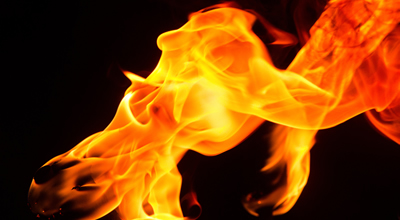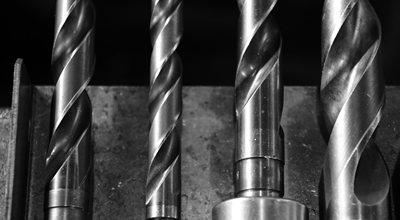What is tungsten?
1High melting point

With the highest melting point among metals, tungsten has a low thermal expansion coefficient and exceptional shape stability, even in extremely high-temperature environments.
2Large electric resistance

With their relatively high electrical resistance, our tungsten rods are designed for use in various discharge electrodes, offering enhanced discharge performance and improved resistance to discharge consumption.
3High hardness

Although tungsten is a metal with high hardness, its hardness is further enhanced when combined with carbon, making it an ideal material for high-grade cutting tools.
Tungsten, meaning 'heavy stone' in Swedish, is a very hard and heavy silver-gray rare metal. With the highest melting point among metals, tungsten has a relatively large electric resistance, making it suitable for heaters and reflectors in furnaces exceeding 2000℃. It also forms a hard alloy when mixed with carbon, and cemented carbide combined with cobalt is used for high-grade cutting tools. Furthermore, tungsten, which has an extremely low environmental impact, provides very high radiation shielding capability compared to lead, making it widely used as a radiation shielding material in medical fields such as X-ray CT. While tungsten may not seem familiar in our daily lives, it is closely related to us through its industrial and medical applications.
| Atomic number *1 | 74 | |
|---|---|---|
| Element symbol | W | |
| Density (Mg/m3)*2 |
293K | 19.3 |
| Melting point(K)*2 | 3653 | |
| Boiling point(K)*2 | 5800 | |
| Electrical Resistance (10-8Ωm)*2 |
293K | 5.4 |
| Specific heat (J/kgK)*2 |
273-373K | 138 |
| Thermal conductivity(W/mK)*2 | 273-373K | 174 |
| Coefficient of Linear Expansion (10-6/K)*2 |
273-373K 293-2273K |
4.5 5.4 |
| Work function (eV)*2 |
4.5 | |
| Thermal neutron capture cross section area (barns/atom)*3 |
19.2±1.0 | |
*2 Fourth Edition of Metal Data Book, The Japan Institute of Metals and Materials
*3 Materials and techniques for electron Tubes,Walter H.Kohl (1960)
Chemical properties
- Tungsten is stable at room temperature but oxidizes to the extent that surface gloss is lost. It mainly reacts with O₂, CO₂, N₂, H₂O, and hydrocarbons at high temperatures, but does not react with mercury vapor or hydrogen.
- When reacting with oxygen or air, it forms elevated oxide (WO₃) through lower oxides such as W₃O, WO₂, or W₂₀O₅₈ as the temperature increases.
- Water does not corrode tungsten, but vapor in the red heat state does, producing WO₃.
- It reacts vigorously and dissolves in a mixed solution of nitric acid and hydrofluoric acid.
- It exhibits reducing properties under extremely high temperatures. When heated at very high temperatures with sulfur, it forms the compound (WS₂), and it produces the compound (W₃P₄) when phosphorus vapor is present.
| Substance | Temperature | Reaction |
|---|---|---|
| Air | Room temperature |
No reaction |
| 400℃ | Oxidation starts | |
| 700℃ | Produces WO3 and rapidly oxidizes | |
| Oxygen | Room temperature |
No reaction |
| 530℃ | Produces WO3 even at low pressure | |
| Vapor |
≧700℃ |
Oxidation progresses rapidly |
| Nitrogen | No reaction up to 2,000℃ | |
| Three stages of absorption up to 1,700°C | ||
| Carbon monoxide |
≧1,000℃ | Produces W2C4 |
| Carbon dioxide |
1,200℃ | Oxidizes |
| Hydrocarbon | 1,200℃ | Produces carbides |
| 2,430℃ | Carbide decomposes | |
| Dry chlorine | 250℃ | Produces 6 chloride |
| Fluorine | Room temperature |
Produces sublimable fluoride |
| Bromine | Red heat | Produces bromide |
| Iodine | Red heat | Produces bromide |
| Hydrogen |
No reaction |
|
| Hydrogen sulfide |
Red heat | Surface reaction occurs |
| Sulfur dioxide |
≧700℃ | Oxide formation |
| Substance | Temperature | Reaction |
|---|---|---|
| Water | Room temperature |
No reaction |
| Hot liquid | No reaction | |
| Mercury | No reaction | |
| Hydrochloric acid | Room temperature |
No reaction for dilute/concentrated |
| Hot liquid | A little corrodes | |
| Dilute sulfuric acid | Room temperature |
Doesn't corrode |
| Hot liquid | Slightly corrodes | |
| Concentrated sulfuric acid |
Room temperature |
Slightly corrodes |
| Hot liquid | Gradually corrodes | |
| Sulfuric acid | Hot liquid | Slightly corrodes |
| Hydrofluoric acid | Hot liquid | No reaction for dilute/concentrated |
|
Sulfuric acid +hydrofluoric acid |
Hot liquid | Rapidly corrodes |
| Aqua regia | Hot liquid | Slightly dissolves producing oxide film |
| Sodium hydroxide |
Room temperature |
Doesn't corrode |
| Dissolved state |
Rapidly corrodes | |
| Accelerated in air by oxidation | ||
| Sodium nitrite | about 500℃ | Melts while violently generating heat |
| Ammonium hydroxide |
Not corrode | |
| Liquid ammonia | Not corrode |
| Substance | Temperature | Reaction |
|---|---|---|
| Carbon, graphite | 850 to 1,410℃ | Absorbs carbon |
| 1,410 to 1,600℃ | Produces carbides | |
| Magnesia | up to 1,500℃ | Stable |
| Zirconia | up to 1,600℃ | Stable |
| Thoria | 2,200℃ | Reduces thoria slightly |
| Alumina | up to 1,900℃ | Stable |
| Beryllia | up to 2,200℃ | Stable |